It was 14 years ago that I saw the first photos of the effects of an explosion on a Lynx. I was at the CASD (Centro Alti Studi della Difesa) when a general who had just returned from the operational theater came to make the picture of the Afghan situation.
I still have the pictures in mind (what I saw then will never be disclosed) with the effects of IED attacks on Italian Lynxes: to think that the cell of a vehicle that now resembled an exploded firecracker could have saved the lives of the occupants ("unharmed") smacked of a miracle.
Equally incredulous were the attackers: according to what was reported by the high officer, one of the nicknames attributed by the rebels in the middle it was of "monster".
In 2007 the insurgents already perfectly recognized the "Lynxes" and feared their occupants: when the means distributed were still few and reserved for the QRF (Quick Reaction Force) they said among themselves that those traveling on the "VMs" were the "good ones", while the "bad ones" circulated on the Lynxes!
As happens in any conflict, the escalation of the explosive power or the dynamics of the attacks will also bring victims, they are however many kids returned home thanks to "San Lince".
The response to the new threats has today produced formidable fruit. We hope he can save the lives of many fighters again.
Andrea Cucco
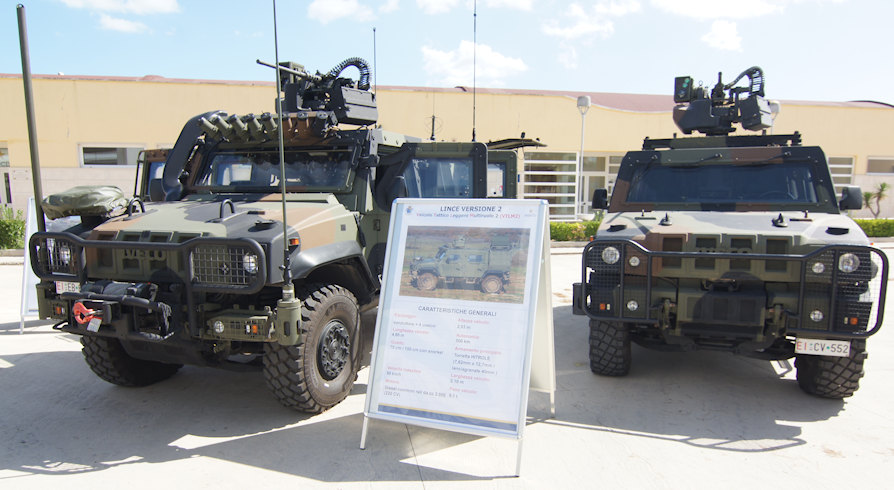
VTLM Lince 2 NEC (by Gianluca Celentano)
This is the expected evolution of the previous VTLM 1A (in the photo above, right) which, while maintaining some characteristics of the predecessor the same homologation, has been redesigned in many of its details, improving dynamic performance, load capacity, ergonomics, connectivity, as well as increasing the already high level of protection.
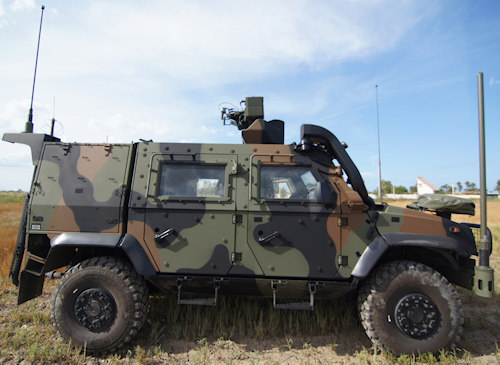
As the first common denominator, the platform embraces the NEC concept - Digitization program of the Italian Army - therefore it is a light multirole tactical unit that is more interactive and able to fulfill all the hierarchical communication needs, starting from the tactical level of command T2 (team), up to T4 (company), by dividing it into nodes or roles.
The 2017 contract with the Ministry of Defense provides for a first batch of 34 LMV 2 NECs and a gradual replacement plan for the current VTLM 1As, putting two thousand Lynx by 2034.
This is not a restyling but a real redesign. Among the most salient aspects is the fact that: "The 1A was structured on a platform of 6.5 tons (but there are those who support much less ..., ndd) then bring it to 7,1, and the Vtlm 2 NEC was born already in over eight tons".
We were welcomed to the 82nd “Torino” Infantry Regiment to turn the spotlight on Lynx 2 NEC and make comparisons with 1A. In May 2009 the 82nd had been chosen, as part of the "FORZA NEC" program, as the first unit destined to be transformed into a digitized media infantry regiment, starting the experimentation with new vehicles and equipment. On January 22, 2021, the department thus received the first 12 light multirole tactical vehicles of new generation.
Advanced technique
Aesthetically it is quite similar to the previous one, but much more aggressive. Many values change: only the PTT (total weight on the ground) goes from 7 to 8 tons, while the height increases by 10 centimeters, reaching 2200 mm. Important is the increase in load of the LMV 2 NEC which rises to one and a half tons compared to the nominal 800 kg of the 1A.
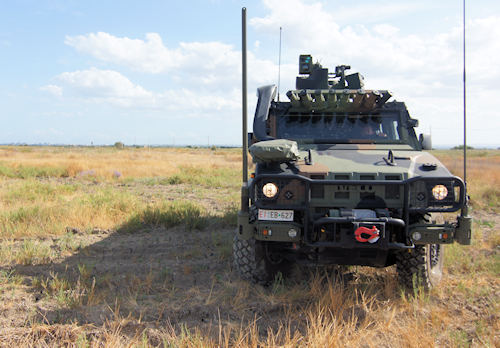
The engine is still the well-known 3.0 turbodiesel common rail IVECO F1C of the Daily, but its power has risen to 220 horsepower, 30 more, making it more powerful but above all much more elastic.
In the kinematic group, the innovations come from gearboxes and differentials. The ZF automatic transmission with torque converter goes from 6 to 8 ratios, offering a much greater degree of exploitation of the engine torque and among other things in the field off-road, in line with the current best performing icons of the 4x4 market, Mercedes G-Class and Jeep Wrangler.
But there is more, in fact it is a self-adaptive gearbox, that is able after 30 'to memorize the driving style of the individual driver, perhaps anticipating downshifts, thus increasing braking safety. Although the driving impression is halfway between the truck and a Jeep, there is no retarder, so "playing" with the engine is essential. It features cruise control, an automotive custom, but also of ESP, a novelty that allows you to control stability while driving.
The braking system has been strengthened and, through the practical joystick and front display that have replaced the T-lever and grille, during deceleration, a backward pressure is enough to downshift by revving the engine integral with the gearbox thanks to the clutch. exclusion of the converter.
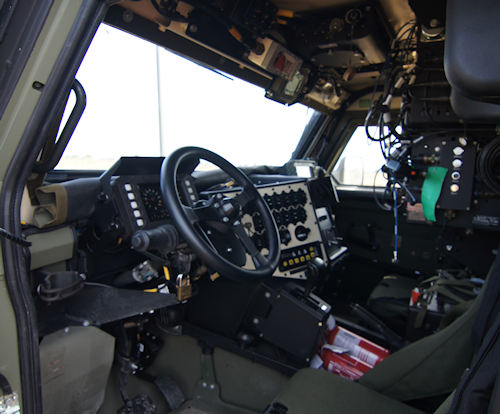
The transmission full time has new transverse differential locks that can be manually engaged or automatically engaged as soon as the sensors detect the need, leaving the NEC2 pilot more time to interact with the crew.
Also noteworthy is the increase in internal space obtained by redesigning the roll cage cage and binding the seats to elastic linkages instead of rigid metal supports.
Security and protection
New suspensions and "springs", as the 82nd military call them, the first to test it as a prototype, but also new hinges for the heavy doors and superior armor plating. Above the driver's seat, where there is no lack of equipment, cables and instruments, the novelty is in the evacuation hatch which is added to that for the turret.
In the internal part of the body, shock absorbing plates have been set up to further cushion shocks and explosions. On the side, the rigid footrests have been replaced by steel and rubber brackets that cannot be deformed in the event of an off-road impact and, in the context of the structural optimization, the spare wheel appears attached to the cover frame to the tailgate.
During the test (v.video) the driver performs safely a sudden swerve proving that, where the 1A would have had serious stability problems, with the new structure you can dare much more even in the side slopes with a turret Hitrole fully integrated, another novelty of the LMV2.
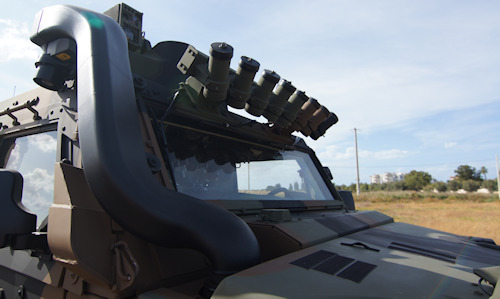
It turns out a little higher from the ground and with a flared ballistic protection at a more pronounced angle than the 1A.
Aesthetically, the line of the two Lynxes is similar and pleasant, even if in the NEC2 the bull bar covering the headlights and radiator and the bonnet is slightly more aerodynamic because it is tilted, but above all replaceable with a ballistic one.
The armored panels were reinforced on all sides, while the glass, including the windshield, increased in thickness.
A certain aggressiveness, perhaps even deliberate, lies in the introduction of the Galix fog guns placed above the roof and able to explode with two separate launches, a necessity that the infantry and genius insiders felt the lack when they had to create a diversion for removal.
The fixed snorkel is added as standard, which can be operated from the driver's seat before wading and the winch which, by means of appropriate maneuvers, can also work from the rear by moving the tow bar.
Interesting are the IR and LED lights even placed on the roof for control or signaling to allied aircraft. Remembering the (power supply) problems when IR headlights were installed on the first version (disassembling them from the M113s!), Their immediate availability is certainly appreciated.
New linking capabilities

Two new interactive levels appear on VTML 2 NEC, T2 and T4 and this explains the presence of the 5 antennas on the structure. The officer in charge basically explains the importance of vehicles and operators in being inside a "communication bubble" in the various command levels, showing us the sophisticated radio and satellite communication systems, as well as geolocation and detection. He shows us a single device containing 4 independent radios with as many waveforms informing us that on board, as happens on helicopters, each operator has, in addition to the helmet, a headset and an intercom.
In relation to the tasks and levels of use of VTML 2 NEC, the five military are in constant radio link with each other and able to receive employment orders or graphic information from the squad commander. With the T4 satellite node, communications can start or arrive thousands of kilometers away from the unit, even on the move.
Il Lynx 2 NEC was long overdue, however listening to the speeches of the military driving, the perception is that the vehicle really responds to the needs and operational uses of the armed forces.
The vehicle represents an absolute success, also commercial, of the national industrial capacities. Today it has the credentials, among the many advantages also o especially for its unprecedented capabilities off-road, to replicate it.
Who knows if a properly prepared version will now accept the challenge proposed by Online Defense last year? That is ... participate in the Dakar!
Good vision!
Photos and videos: Online Defense












